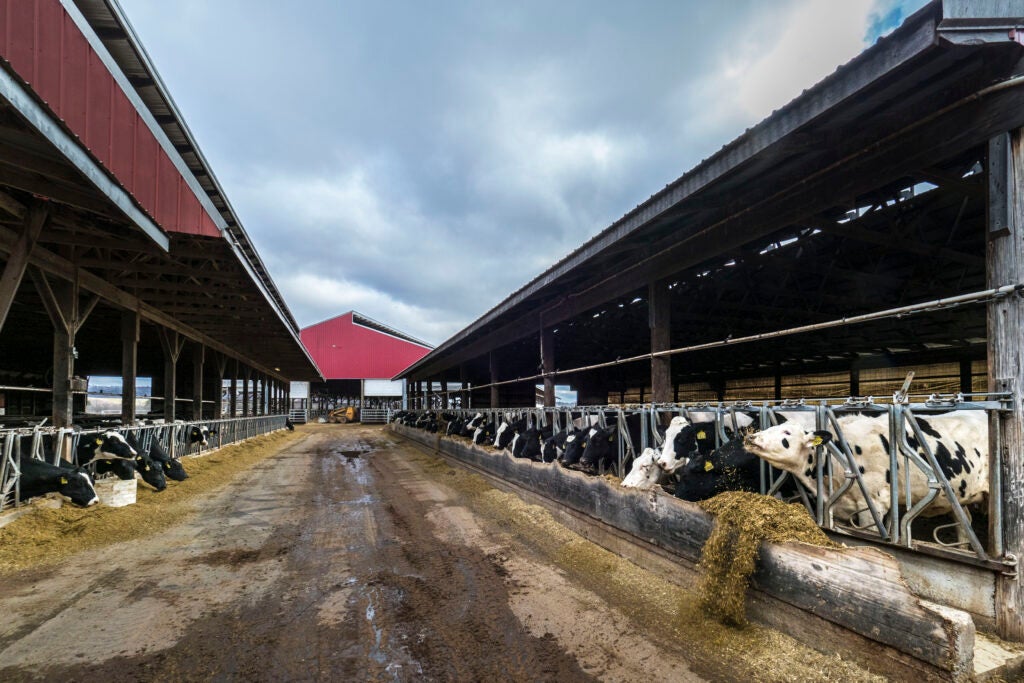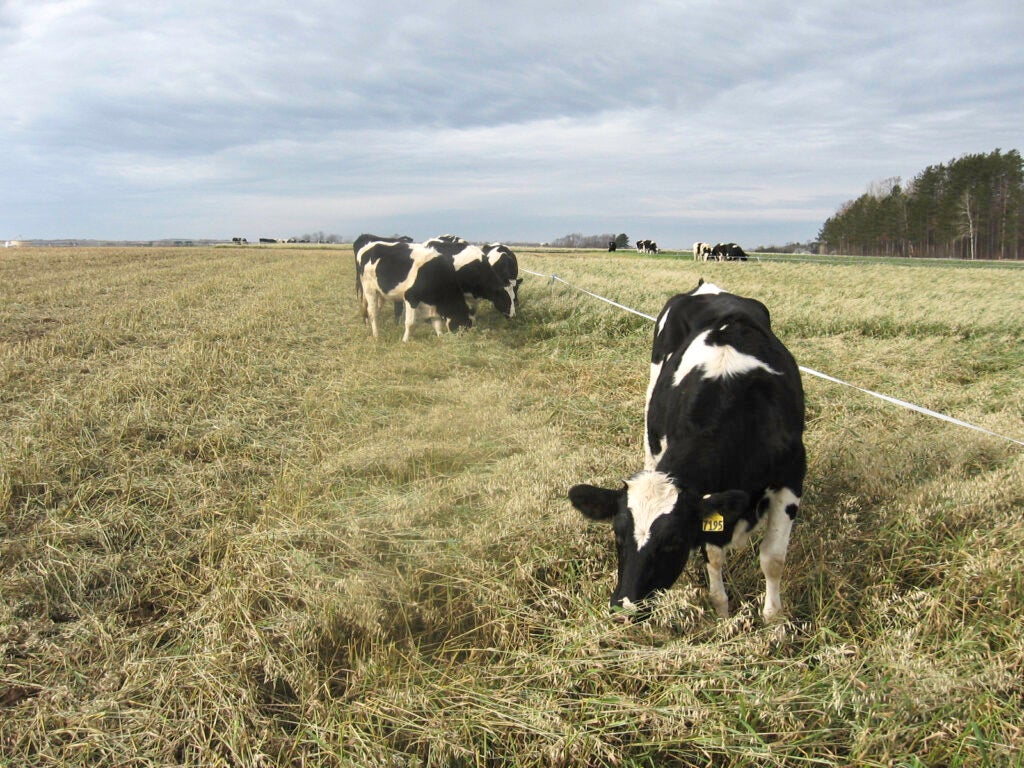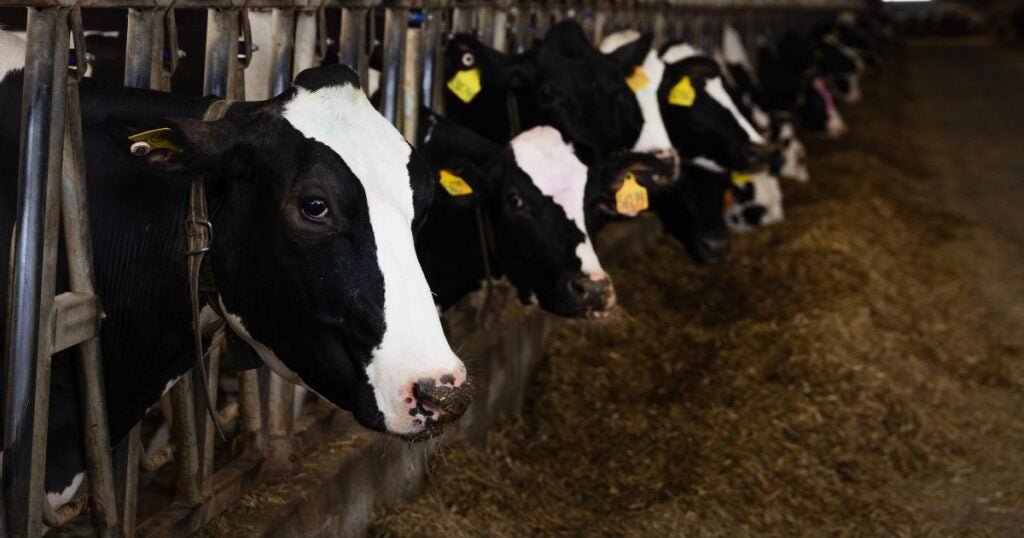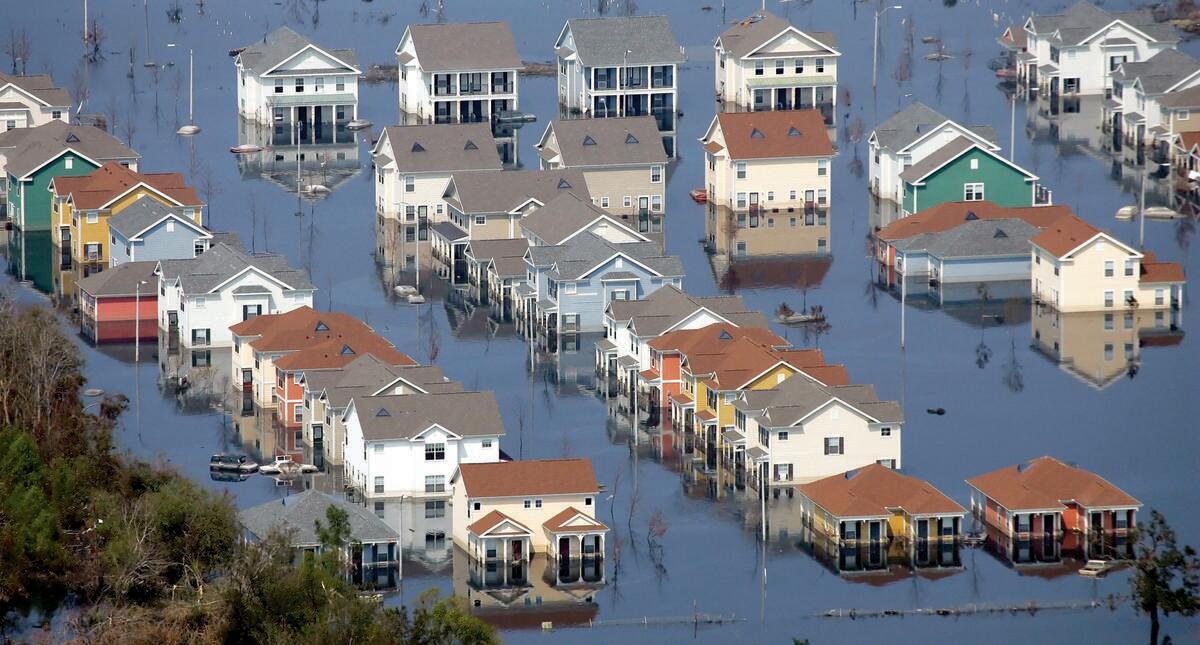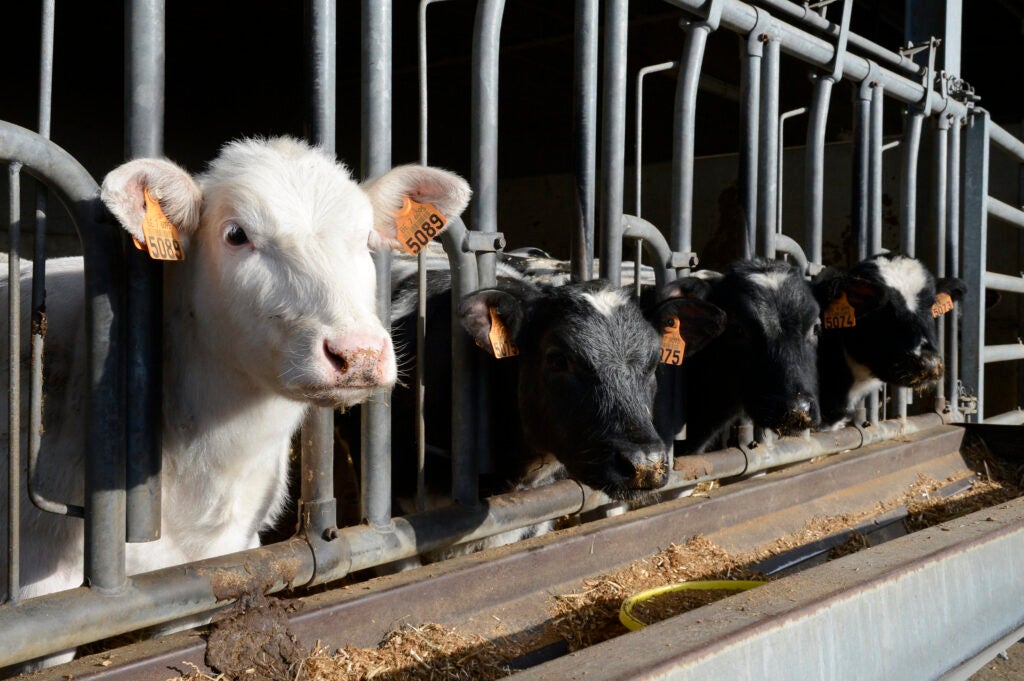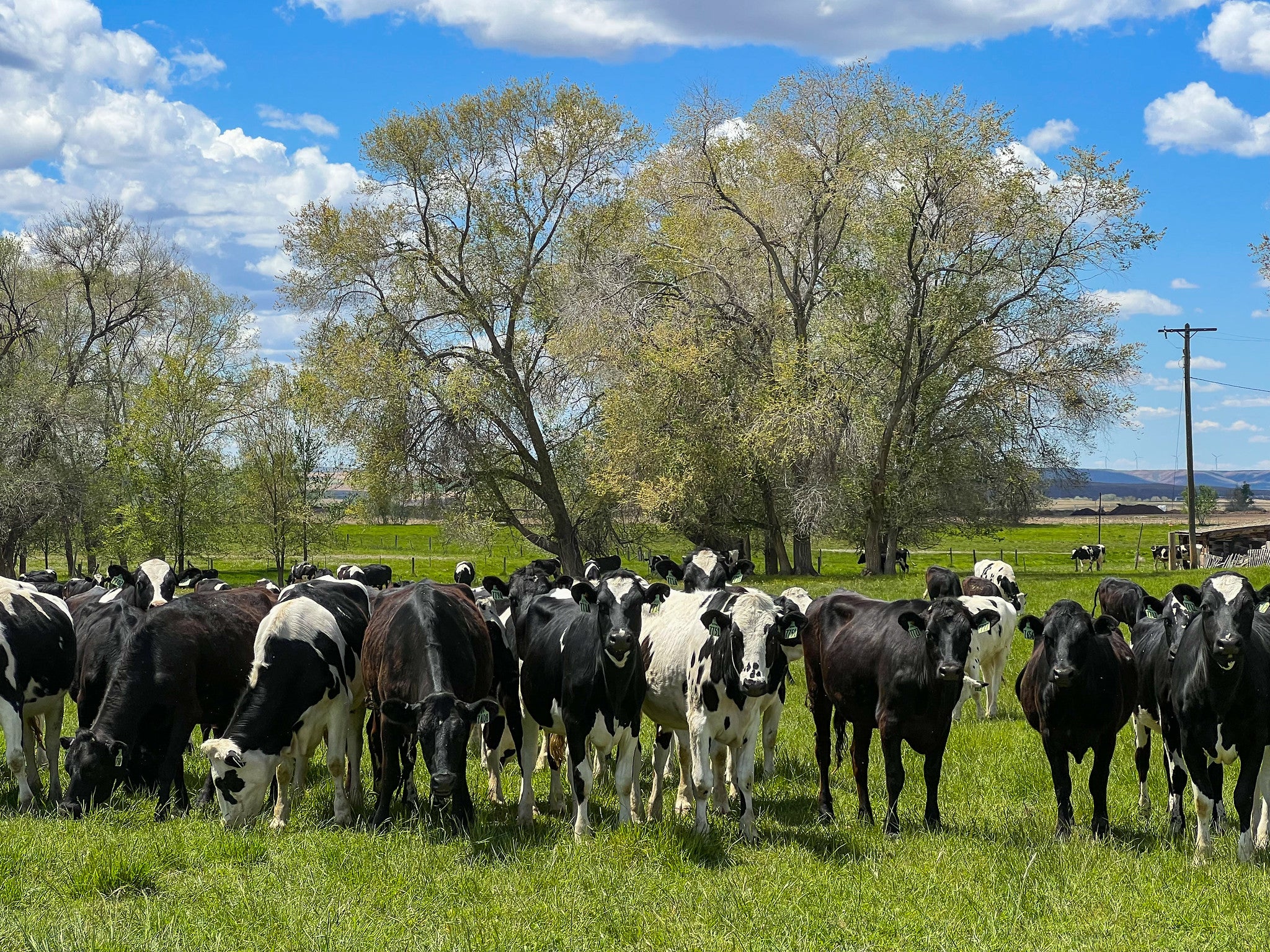Farmers and ranchers around the world face increased heatwaves, droughts and heavy rainfall, making it harder to grow livestock and crops. This means less financial security for farm families and, globally, bigger threats to people’s access to nutrition.
Growing Returns
Selected tag(s): climate change
Why lowering livestock methane emissions will help slow climate change and benefit farmers
Extreme heat puts pressure on cows and farmers
Dairy and beef producers are feeling the strain of heat waves — and so are their animals. Longer, hotter summers are making it harder for cows to stay healthy and productive. Heat stress lowers milk yields, weakens cows’ immune systems and can even threaten fertility.
For farmers, the impacts go beyond animal health: heat stress reduces milk yields and fertility in cows, which translates directly into financial losses from lower production and higher management costs. Lower productivity also increases the methane intensity of any milk or meat produced.
But across the world, producers, veterinarians and nutritionists are responding with new tools and time-tested strategies to help livestock cope. These solutions matter not only for animal health, but for food security, rural livelihoods and climate resilience.
A new normal for Irish dairy: Pioneering sustainable change for Ireland’s climate future
Ireland’s lush pastures and deep-rooted agricultural traditions have long made it a global dairy powerhouse. But with agriculture contributing nearly 38% of the country’s greenhouse gas emissions — four times the EU average — there’s no escaping the uncomfortable truth: Ireland’s booming dairy sector must evolve to meet the country’s climate targets.
To respond to this pressing challenge, Environmental Defense Fund Europe (EDF Europe) and Climate KIC partnered to explore a new vision for sustainable dairy. The goal? To co-create a future-proof model that balances climate action with economic resilience in Ireland’s rural heartlands.
Below, we’ll outline a new roadmap for sustainable dairy. Read More
To slow climate change, we must measure livestock methane accurately
Reducing methane emissions, a climate super-pollutant, can lessen rates of warming within decades. Since livestock farming is one of the biggest emitters of that methane gas, with enteric methane from cow burps alone contributing about a third of all human-caused methane emissions each year, lowering it can have a big impact.
To reduce livestock emissions, we first have to know where we’re starting. That requires accurate and validated measurement, but measuring methane from livestock isn’t simple — how we do it matters. These are the most important considerations.
How can we support New York City’s housing cooperatives in adapting to climate change?
Co-authored by: Anushi Garg and Linda Shi
Anushi is the senior analyst for Environmental Defense Fund’s Climate Resilient Coasts & Watersheds program in New York-New Jersey. Linda is the associate professor for Department of City and Regional Planning at Cornell University.
New York City, like many cities, is simultaneously facing a housing affordability crisis and the impacts of climate change. As the city responds to these complex, interlinked challenges, it is critical to find solutions that ensure all New Yorkers have access to housing that is affordable and adapted to a changing climate.
Unfortunately, cooperative housing, also known as co-ops, lacks access to many public sources of climate adaptation and disaster recovery funding, despite making up more than 12% of the city’s housing stock. Co-ops have a unique ownership model, one where residents have shares in a corporation that owns the building, as well as a proprietary lease tied to their unit, rather than a property title. This model helps preserve long-term affordability, but can also prevent co-ops from accessing resources geared towards housing that is owned by an individual.
To support affordable multi-family co-ops, Environmental Defense Fund, Urban Homesteading Assistance Board (UHAB) and Cornell University released An Assessment of NYC Cooperative Housing’s Climate Vulnerability and Barriers to Adaptation. This report, based on a mapping assessment, a first-ever survey of co-ops and a policy review, looks at climate impacts on permanently affordable co-ops in New York City and encourages more responsive and equitable policies. Read More
New Report: How high-quality carbon offsets can lower livestock methane emissions
Authors: Erin Leonard and Maggie Monast
With more than 80 times the warming power of carbon dioxide over the first 20 years after its release, methane is one of the most potent greenhouse gasses. One major contributor to global methane is livestock operations — 32% of methane emissions from human activity come from livestock and animal agriculture.
The good news is that methane’s massive warming potential also creates an opportunity for a big and rapid impact if we can mitigate those emissions. To avoid the worst effects of climate change, we need to rapidly lower livestock methane emissions, a process that requires support and incentives to help farmers and ranchers adopt changes in their businesses.
Three ways to make home buyouts more efficient
By: Gabrielle Rosario, EDF Intern
Each year, flood risk increases from sea level rise and storms, raising major concerns among millions of homeowners. Flooding can inundate homes, damage property and cause safety and health concerns, as well as isolate residents from essential government services like trash pickup or emergency vehicle access. In fact, by 2030, over 20 million Americans will be at risk of inundation due to sea level rise, and many will be unable to afford to move.
Managed retreat policies, such as voluntary home buyouts, can facilitate the relocation of residents out of increasingly flood-prone communities. But unfortunately, existing federal programs are slow and require local governments to meet complex and challenging guidelines.
Innovative approaches are needed to make buyouts more efficient. Here are three strategies that can help:
Closing the enteric methane emissions innovation gap: A call for funding high-quality research
By Peri Rosenstein and Nicole Jenkins
Methane emissions are a potent greenhouse gas, warming the climate more than 80 times faster than carbon dioxide on a 20-year timescale. Rapidly and significantly reducing methane is the most effective way to reduce the rate of warming, especially over the next few decades.
Good manure management must involve ammonia emissions, too
When it comes to livestock and environmental impacts, methane emission reductions are often top of mind — and for good reason. Lowering methane emissions from animal agriculture is one of the fastest ways to slow down climate change. However, important local air pollutants like ammonia are seldom discussed with the same frequency or urgency.
Agriculture needs a path forward that jointly addresses its global climate impacts and its local environmental and public health impacts in an equitable way. Methane and ammonia must be managed in tandem. Read More
Revisiting a centuries-old approach to farming that embraces water scarcity.
As discussions at COP28 wrestle with climate impacts on global food and water security, we hear from a Hopi farmer on his thriving practice of dry farming and his hopes for shared learning in Dubai.
______
The arid climate of the Hopi reservation in northeastern Arizona receives a mere 8.5 inches of annual rainfall. For perspective, the yearly United States average is 30 inches. Despite this severe aridity, for over 3,000 years, the Hopi people have stewarded an extraordinary agricultural tradition centered on dry farming.
Dr. Michael Kotutwa Johnson is an Indigenous Resiliency Specialist at the University of Arizona and a leading practitioner of Hopi dry farming — a form of agriculture that eschews irrigation in regions with limited water moisture. As a 250th-generation Hopi dry farmer, his ongoing traditional practices are a testament to the power of cultural values and the potential of climate-adaptive farming. These ongoing Hopi farming practices defy modern notions of crop needs and vulnerability in areas with limited irrigation and water supply.










